The Story of — The Olive
The olive’s fruit, also called an “olive”, is of major agricultural importance in the Mediterranean region as the source of olive oil; it is one of the core ingredients in Middle Eastern and Mediterranean cuisines.
Thousands of cultivars of the olive tree are known. Olive cultivars may be used primarily for oil, eating, or both. Olives cultivated for consumption are generally referred to as “table olives”.About 80% of all harvested olives are turned into oil, while about 20% are used as table olives.
The first cultivated olive tree is said to have been planted by the ancient Greek goddess, Athena, at the rock of the Acropolis in Athens. Athena had had a disagreement with Poseidon, god of the sea, over who would govern the great city. They had a contest in which each had to offer a marvellous present, and the other gods would decide which was the most precious.
The immortals watched, on tenterhooks, as Poseidon drove his holy trident, the great forked spear which decided the fate of the seas, and stabbed it into the side of the holy rock, opening a precious spring of salty water. Everybody was suitably impressed.
But then Athena stepped forward, in her flowing white robes. She stabbed her javelin into the earth, and immediately an olive tree sprang up, its branches loaded with fruit. The beautiful tree wowed everyone with its silver-green foliage and its invaluable oil.
For thousands of years olives were grown primarily for lamp oil, with little regard for culinary flavor.Its origin can be traced to the Levant based on written tablets, olive pits, and wood fragments found in ancient tombs. As far back as 3000 BC, olives were grown commercially in Crete and may have been the source of the wealth of the Minoan civilization.
The olive trees on the Mount of Olives in Jerusalem are reputed to be over 2000 years old, still relative newcomers considering the long domestication of the olive
Olives are very high in vitamin E and other powerful antioxidants. Studies show that they are good for the heart and may protect against osteoporosis and cancer.
The healthy fats in olives are extracted to produce olive oil, one of the key components of the incredibly healthy Mediterranean diet.
Olives are also enjoyed in salads, sandwiches, and spreads.
Some immature olives are green and turn black when they ripen. Others remain green even when fully ripe
In the Mediterranean region, 90% of olives are used to make olive oil .
Olives and the New World
Olives are not native to the Americas. Spanish colonists brought the olive to the New World, where its cultivation prospered in present-day Peru, Chile, and Argentina.
The first seedlings from Spain were planted in Lima by Antonio de Rivera in 1560. Olive tree cultivation quickly spread along the valleys of South America’s dry Pacific coast where the climate was similar to the Mediterranean. Spanish missionaries established the tree in the 18th century in California. It was first cultivated at Mission San Diego de Alcalá in 1769 or later around 1795. Orchards were started at other missions, but in 1838, an inspection found only two olive orchards in California. Cultivation for oil gradually became a highly successful commercial venture from the 1860s onward.
Olive Varietals
There are hundreds, perhaps thousands, of olive varieties all over the world. However, only about 150 are regularly cultivated for eating and making olive oil. Different olive varieties taste different due to many factors, including soil and weather conditions, when they are harvested, polyphenol content and more
The olive’s sweet, sour, salty, bitter and spicy flavours are extremely complex, making them a must-have in any kitchen. They’re incredibly versatile, whether eaten as an appetiser, incorporated into spreads and tapenades, tossed into salads, added to cheeseboards, mixed into slow-cooked casseroles and sauces, or even in martinis.
With so many varieties available, it can be challenging to know which one to choose. Here are 12 of the most popular types of olives, their characteristics and how to taste them.
Kalamata
Some Kalamata dark purple olives from Greece
Hailing from the southwest of the Peloponnese peninsula, Kalamata olives are perhaps the most well-known table olive varieties .Among the most beloved and popular Greek olives, Kalamatas are dark purple to almost black, with shiny and wrinkled skin and a shape that resembles an almond. They have an intense, fruity and slightly salty flavour. They’re typically preserved in red wine vinegar, red wine, or olive oil to impart a rich and smoky taste. Kalamatas go well with salads, pizzas, and tapenades and as a garnish for dishes.
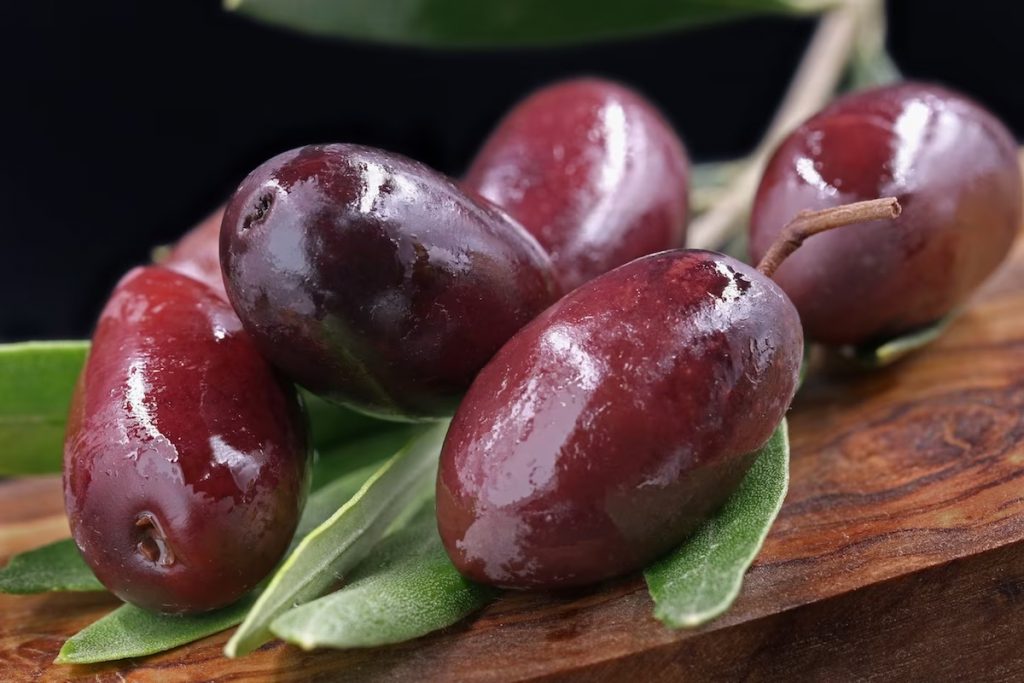
Cerignola
Bowl of large-size green Cerignola olives from south of Italy
These large olives are harvested in Cerignola, in Italy’s Puglia region. They come in green, bright red, deep purple, and black and are often used as table olives. They are crisp, mildly tart and buttery, with thick, meaty flesh. Their size makes them easily stuffable – they pair well with garlic, cheese, capers, and anchovies.
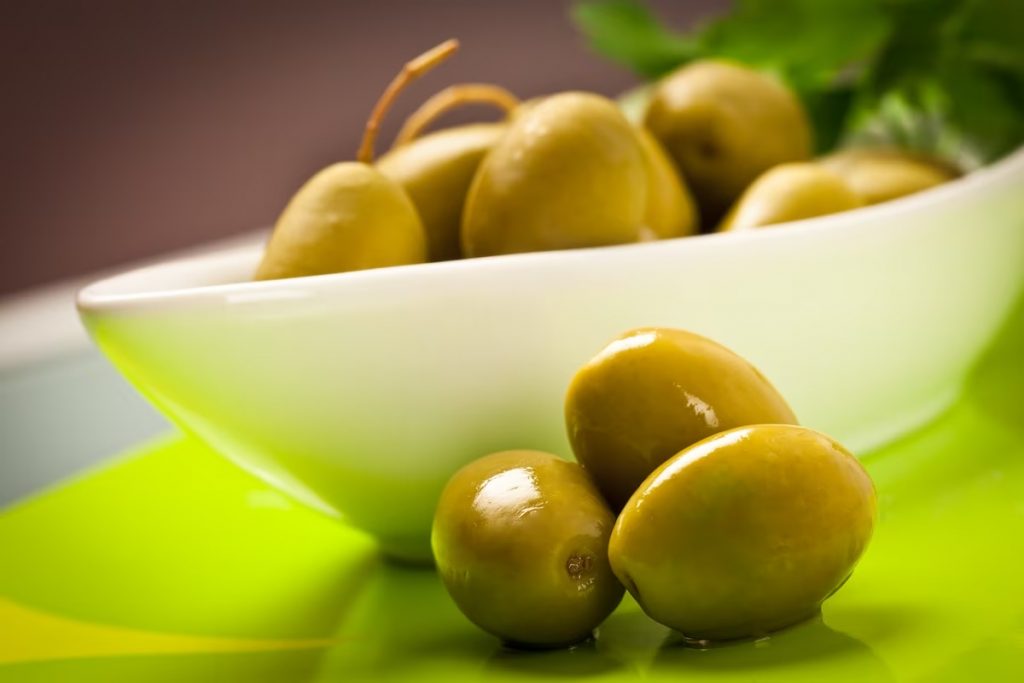
Niçoise
Spoon with Niçoise black small olives grown in the Alpes Maritimes region
Niçoise olives are grown in the Alpes Maritimes region of France – this part of the country includes the city of Nice. The olives are small with firm flesh and have a large pit for their size. Niçoise olives are salty and sour, with bitter, intense flavours and a pleasant herbal fragrance with liquorice notes. With origins close to the sea, they’re often paired with seafood and are an essential ingredient in the classic dishes of the French Riviera. They can also be added as a topping on pizza or cooked into sauces.
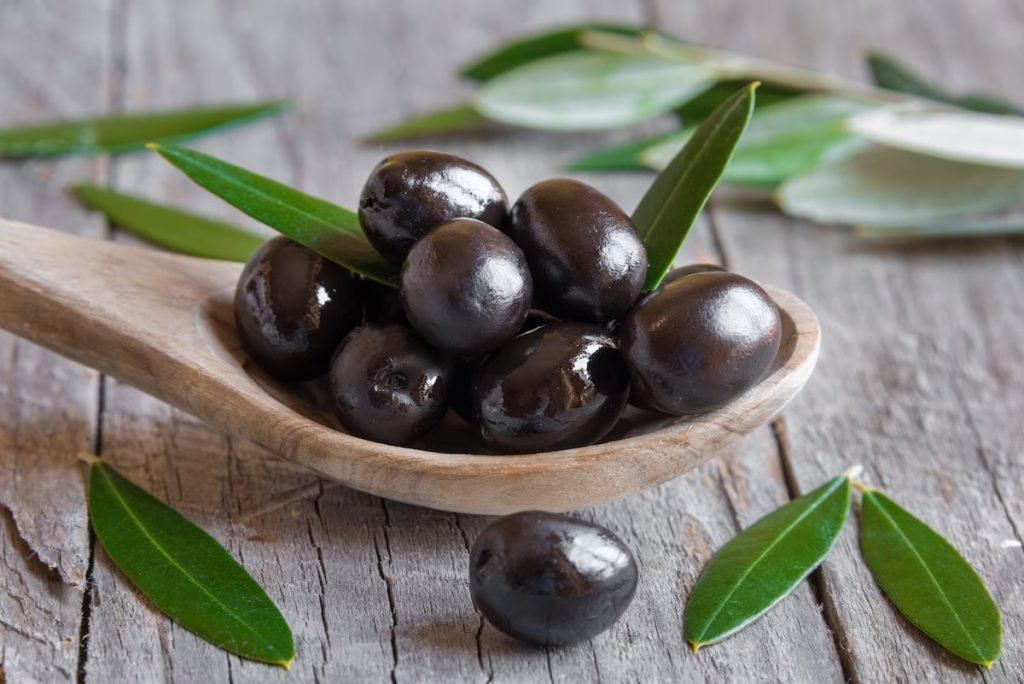
Thassos
Bowl of small size black olive quality from Greek island of Thassos
Named after the Greek island in the northern Aegean Sea where they are grown, Thassos olives are small, black and have very thin skin. Left on the trees until winter, they are naturally cured when picked and only need dry curing on a bed of coarse salt, resulting in a wrinkled, succulent olive that has a wonderfully mellow taste. Intensely fruity, these olives are ideally paired with blue cheese and freshly sliced citrus fruits.
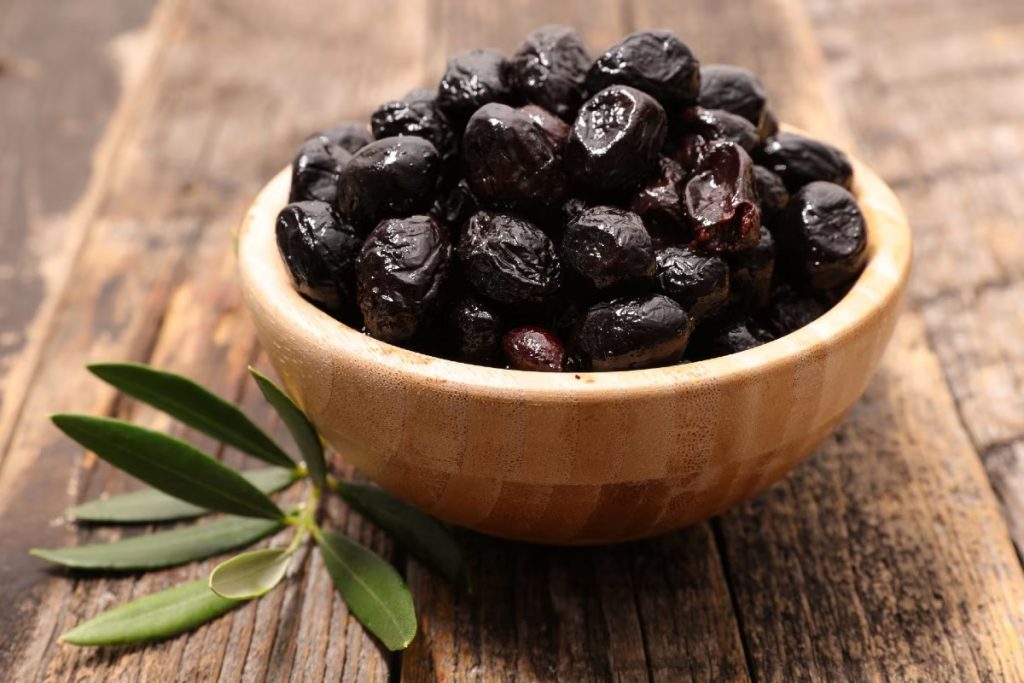
Nyons
Some black small-size Nyons olives
These small, almost black olives are grown in and around the beautiful town of Nyons in the south of France. Distinguished by their large pits and sweet meaty flavour, Nyons olives have earned their own AOC, or Appellation d’Origine Contrôlée – the French system for designating and controlling the geography and quality of wines and other products. You can eat them straight out of the jar or use them to make a tapenade. They’re particularly delicious when drizzled with Provençal olive oil and aromatic herbs like rosemary and thyme.
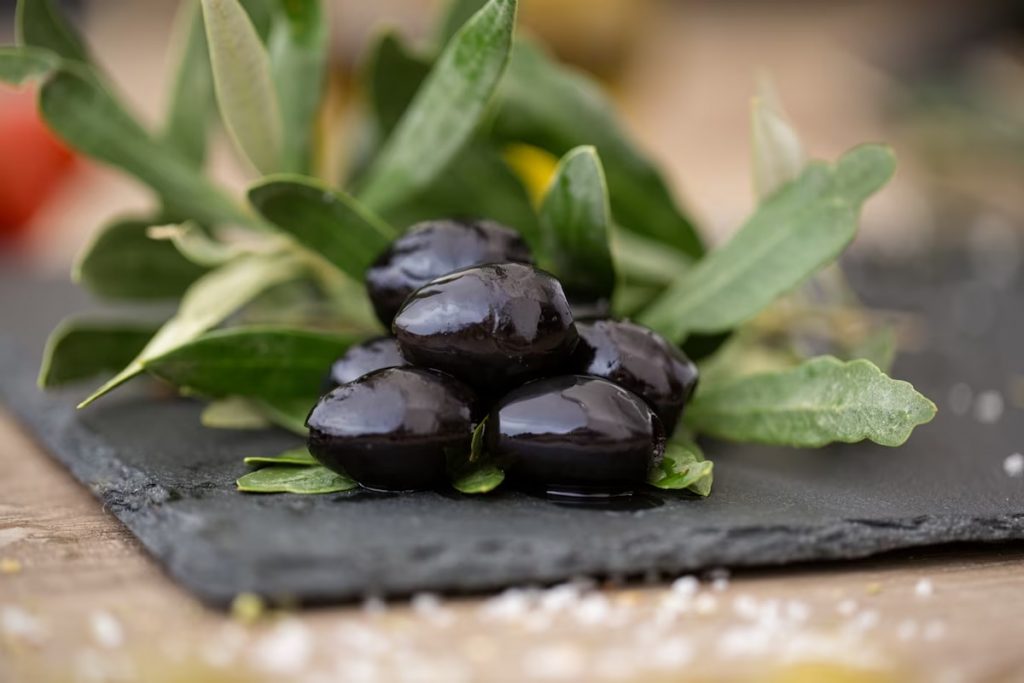
Picholine
Market bowl fill with Picholine olives grown in Morocco
Picholine olive trees grow in Morocco and the Riviera regions of France and Italy. These almond-shaped green olives are incredibly crisp and firm, with a lemony, buttery, anise-like flavour. They’re aesthetically pleasing and elegant enough to serve as appetisers and enhance hearty stews.
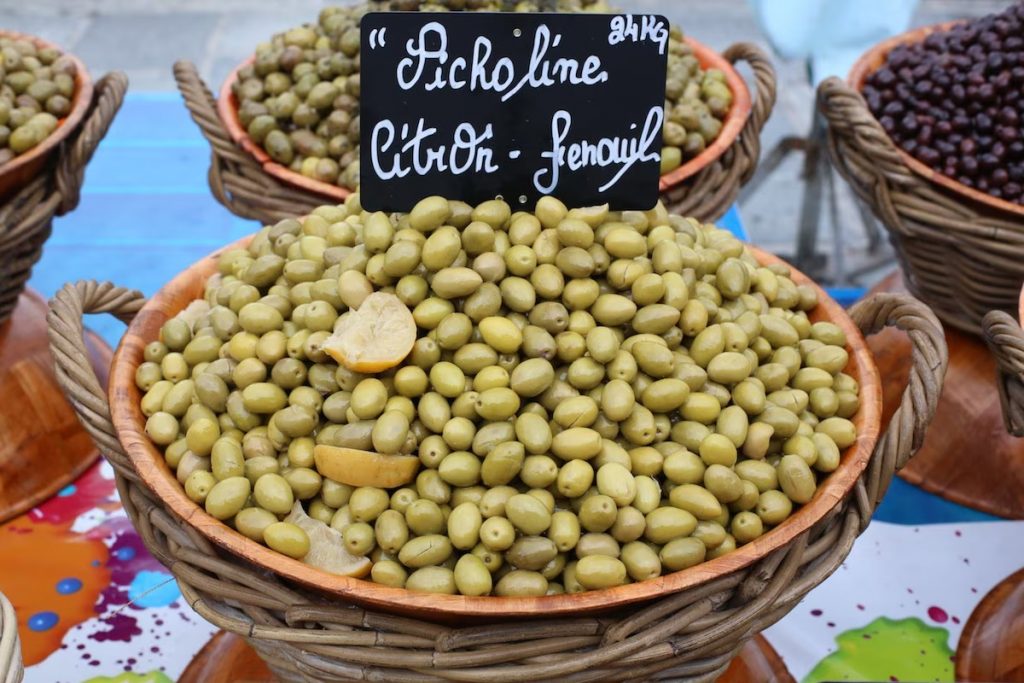
Gaeta
A tree of small, oval-shaped, purple olives from Gaeta
Gaeta olives are named after the town of Gaeta, south of Rome, and are renowned for their unique and delicious taste. These small, oval-shaped olives have dark purple flesh and provide a meaty texture combined with a pleasant blend of tart and salty notes. Gaeta olives are frequently used in salads or chopped up and mixed into tapenades.
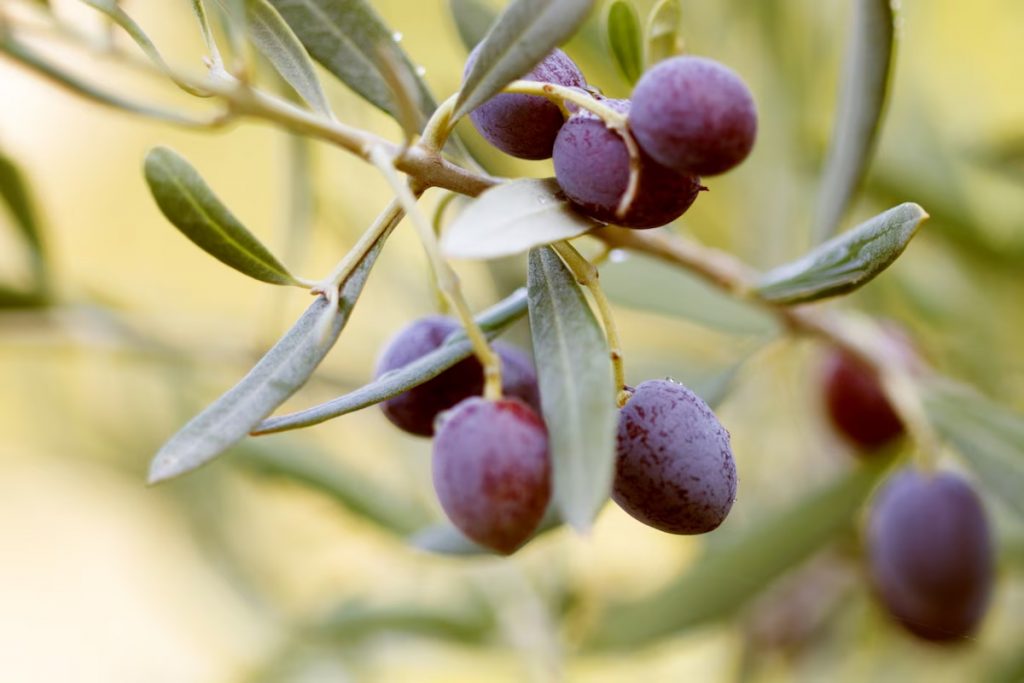
Castelvetrano
Big green olives from Castelvetrano in Sicily
Castelvetrano olives, also known as Nocellara del Belice, are a delicacy of the Valle del Belice, Sicily. They have a signature rich, buttery flavour and crisp, meaty texture. They’re perfect for sprucing up salads, pizzas and pasta and adding a special touch to cheese platters and charcuterie boards.
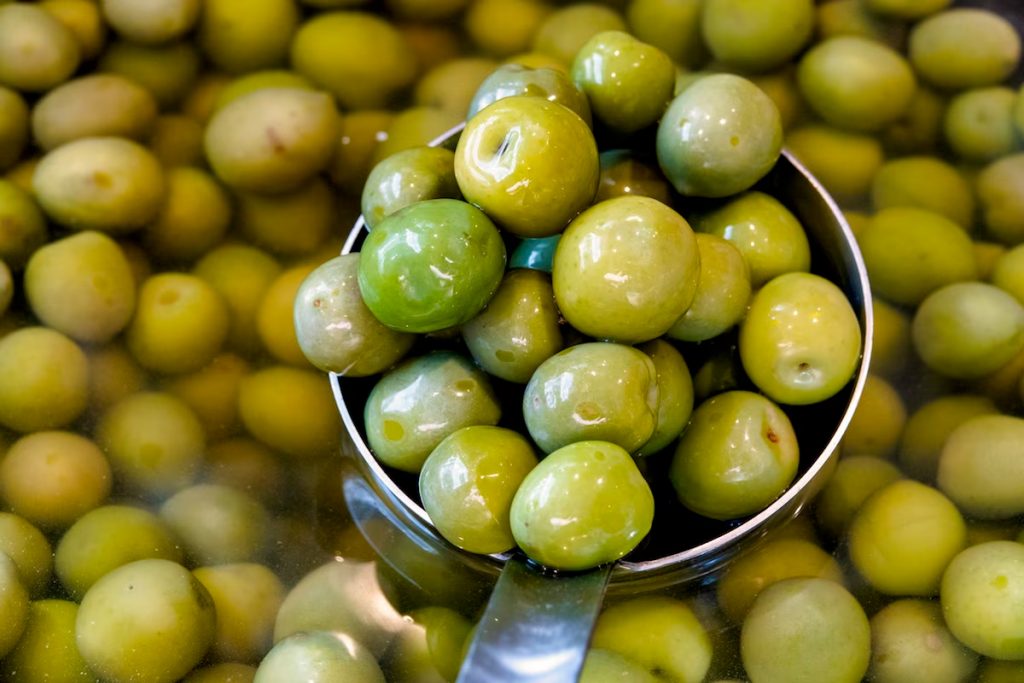
Manzanilla
Manzanilla olive variety, oval-shaped olives from Sevilla in Spain
This oval-shaped olive from Sevilla, Spain, has a crisp texture and a slightly smoky, almond-like flavour. Manzanilla olives are green in colour, plump and meaty and are most commonly stuffed with pimiento paste to create the popular stuffed Manzanilla olive or skewered in cocktails. These olives offer a burst of flavour with a mild saltiness and are a staple of Spanish tapas paired with anchovies and sheep’s milk cheese.
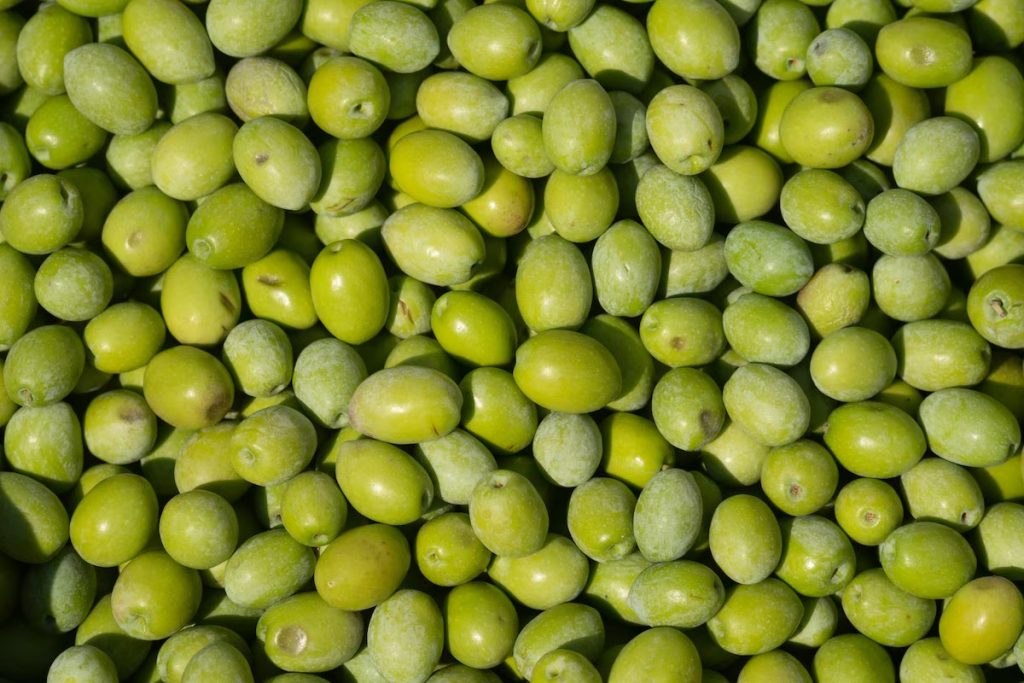
Alfonso
Bowl of oval, deep purple Alfonso olives grown in Chile
Alfonso olives are grown in Chile. They are oval, deep purple, juicy and fleshy, with a slightly sour taste. It’s a variety typically enjoyed with charcuterie and full-bodied red wine.
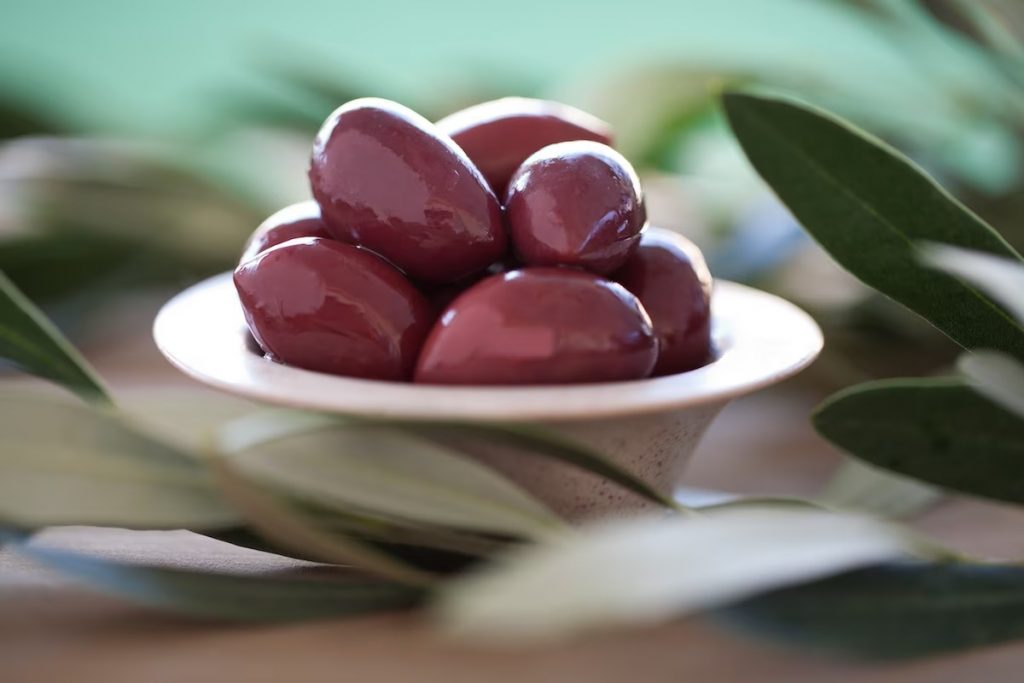
Arbequina
A tree of small round Arbequina olives a variety from Spain
Arbequina olives are small but big in flavour. These round Spanish olives are commonly eaten as table olives. Moreover, due to their high oil content, they are pressed to obtain one of the best olive oils in the world. With a colour that ranges from light pink to deep orange, these gems bring vibrancy to cheeseboards and spreads.
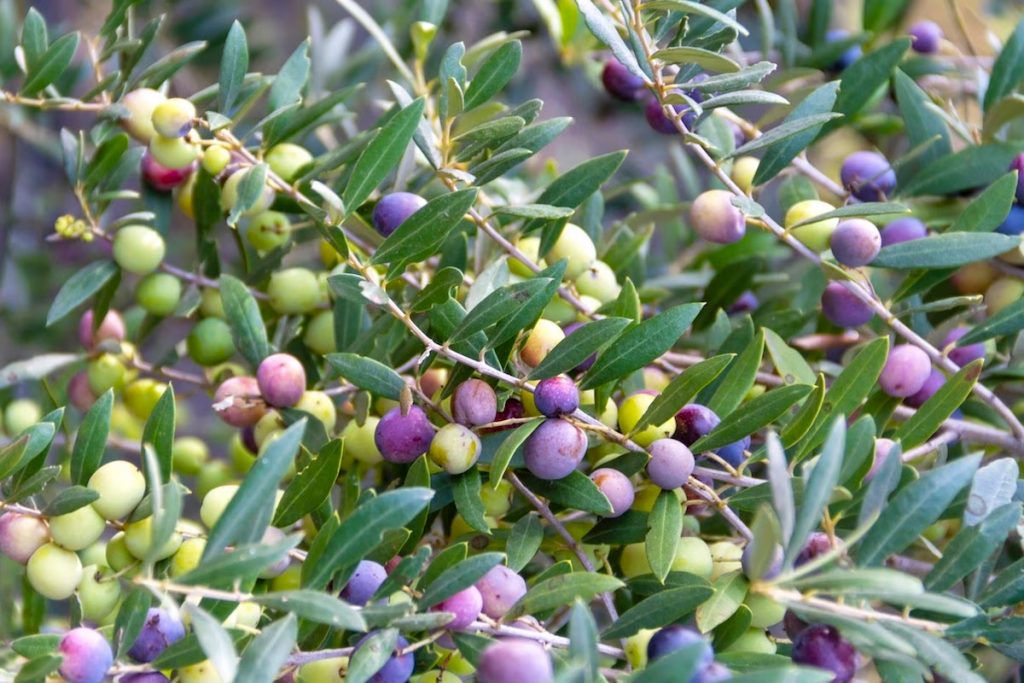
Beldi
Market bowl fill with Beldi black olives grown in Morocco
Grown in Morocco, Beldi olives are a miracle of nature, prized for their unparalleled flavour and aroma. They’re small and shrivelled with a chewy texture. Serve them the Moroccan way: in salads or tagines or with good olive oil and hot peppers.
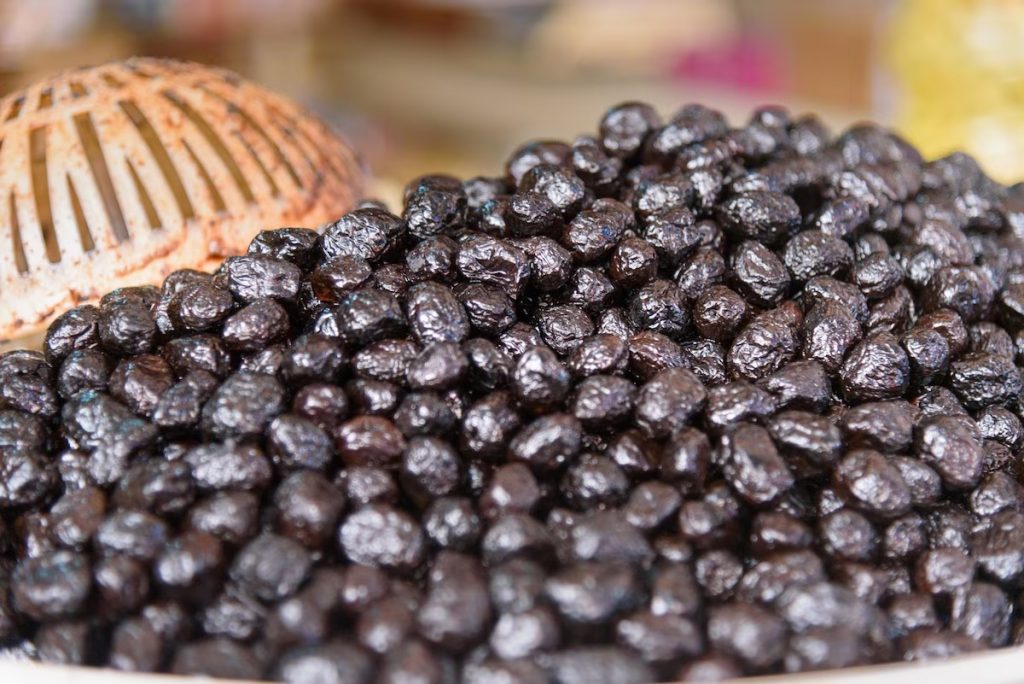
Destination – Greece / Italy/ Cyprus / /Turkey /Syria /Bulgaria / Italy/ France/ Spain/ Portugal /Israel/ Palestine / California/ Australia/ Algeria/ Morocco/ Tunisia / Jordan/ Egypt/ Peru / Chile/ Argentina




